All about eczema: causes, symptoms, treatment and prevention
Eczema, also sometimes known as dermatitis, is an itchy, red skin rash. It may affect any area of the body. This post takes a detailed look at causes, symptoms, treatment and prevention of eczema. Both evidence based medical and natural remedies for eczema are featured.
While eczema may affect any part of the body in most cases it appears on the knees or elbows. In babies, eczema usually appears on the face, particularly the cheeks and chin. It may also appear on the chest, shoulders, back, scalp and outer arms and legs. Children mostly tend to have eczema on the wrists, ankles, neck and in body parts that bend, like the inner elbow and under the knee.
Eczema symptoms and triggers
Severity of eczema symptoms decreases as children grow into adults. For some patients, eczema may continue into adulthood. Eczema may also start during adulthood. For every case, the rash of eczema is different. It may even affect different parts of body or appear different in the same individual from time to time. Its severity ranges from mild, moderate to extreme (1). Generally, people who have eczema have dry and sensitive sky. During eczema, there is intense itching. The itching may be so severe that the patient scratches his skin until it bleeds, which can exacerbate the rash, bringing about even more inflammation and itching. This is known as the itch-scratch vicious cycle.
This is how eczema looks like:
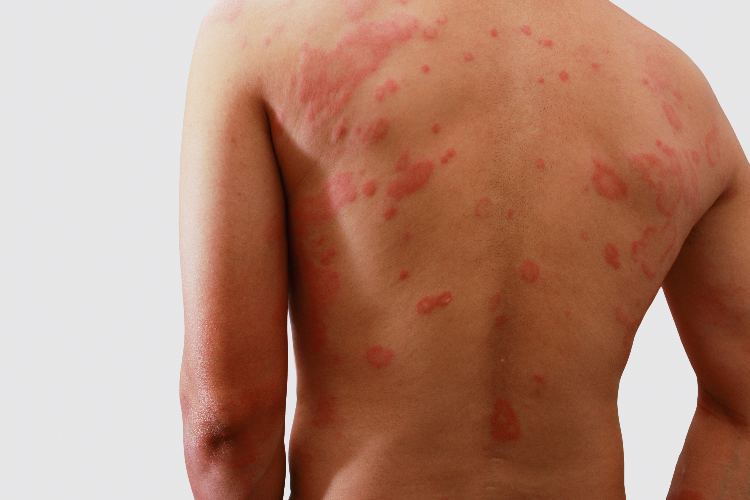
The exact factors contributing to eczema are unknown. Mostly, people are genetically pre disposed to eczema. You may be more prone to developing eczema if you already have a family member who has eczema or who suffers from rhinitis or a family history of asthma. Many medical experts think eczema is linked to the onset of allergic disease, such as allergic rhinitis, hay fever or asthma. Doctors refer to this as the atopic triad (2). Up to 80% children with asthma or hay fever develop eczema (3).
A lot of triggers can cause onset of eczema or make it worse. Some of the common triggers are described below. To avoid eczema, it is important to know its triggers (3).
Irritants
Irritants such as cleaning supplies may exacerbate your eczema symptoms. Different people are sensitive to different irritants but generally these substances include:
- Detergents
- Shampoos and soap
- Dish-washing liquids
- Shower gel and bubble bath
- Cleaning supplies
- Chlorine and other disinfectants
- Juices from fresh fruits, vegetables, etc.
Irritant contact dermatitis is a type of eczema in which skin becomes itchy and red due to environmental factors such as low temperature, over-exposure to water, friction or contact with substances such as alkalis, acids, detergents and solvents.
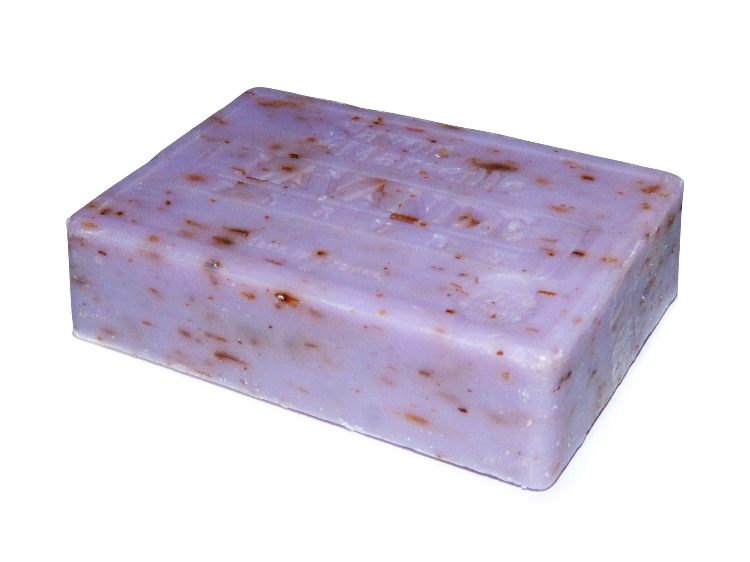
This type of eczema develops when physical factors or chemicals harm the skin more rapidly than the skin is able to restore the damage done. Irritants take away moisture and natural oils from outer layer of skin, allowing irritant substances to infiltrate more deeply and bring about further damage by eliciting inflammation.
The severity of irritant dermatitis is quite unpredictable and is determined by many factors such as:
- Amount of the irritant
- Strength
- Duration that skin is exposed to irritant
- Susceptibility of skin
- Temperature, humidity and other environmental factors
Anyone may contract this skin condition, if exposure frequency to irritants is strong enough, but individuals with allergies are particularly predisposed.
Irritant contact dermatitis usually does not spread beyond the area of contact with the irritant, especially in initial stages. If the eczema persists for a long time or is severe it may afterwards reach originally unaffected sites but the likelihood of this happening is less than in eczema caused by allergens.
The eczema appears as a well defined scarlet area with a glossy surface, but there may be swelling, blistering and scaling of the damaged area. This may be indistinguishable from other types of dermatitis. It can be very itchy.
Appearance of eczema or contact dermatitis varies according to triggers.
- Unintended contact with a strong irritant such like a strong acid or alkali or corrosive substance may cause an instant skin reaction causing pain, swelling and blistering.
- Accidental exposure to mild irritants for example cleaning materials such as soap or detergent may within weeks cause itching, dryness and cracking of the skin. Over time, there is break out of sores which cause blistering and itching.
Some typical causes of eczema or contact dermatitis include:
- In babies and infants, dribble rash may appear around chin and mouth. This is due to drooling of saliva which is alkaline. Skin bacteria are a contributing factor.
- Napkin dermatitis affects elderly incontinent adults and babies mostly. It is caused when faeces and urine are wiped.
- Chemical burns from strong chemical substances such as alkalies (sodium and calcium hydroxide) or acids.
- Housewife's eczema is a type of hand contact dermatitis caused by too much exposure to cleaning materials such as soapy water, detergents, dish washing liquid, bleaches and polishes.
- Eczema can appear on a finger beneath a ring that is worn for a long duration. Soap, creams, detergents and shampoo may accrue under the ring and trigger irritant contact dermatitis.
- People who wear rubber gloves and deal with irritant substances are at increased risk of developing eczema because latex is also an irritant substance and the chemical materials such as dish washing liquid may accumulate inside gloves.
- Fiberglass can direct frictional or mechanical damage to skin.
- In winter, dry cold nippy air may cause eczema or winter itch.
- Make up products and skin care creams and lotion can cause eczema when applied to sensitive facial skin. Gels and solutions tend to have a gentler effect than creams or lotions.
Over time, skin develops a degree of tolerance towards mild irritants.
Allergens
Genetic makeup may make some people more prone to developing atopic eczema. The skin condition develops after an individual is exposed to particular environmental factors, such as allergens.
The body reacts in an irregular manner when exposed to any allergic substance. This is called an allergic reaction. The allergens that commonly cause onset of eczema include:
- Dust and pollutants such as smoke.
- Pet animals. More people are allergic to cats than dogs.
- Pollens (depending on season)
- Dandruff
- Diapers
- Molds
Microbes
Some microbes (microscopic organisms) can also trigger eczema such as:
- Bacteria living on skin or present in atmosphere such as staphylococcus aureus.
- Fungi and molds
- Viruses
Hot or cold temperatures
Eczema can be triggered by hot weather, humidity or due to sweating and perspiration. It is also common in cold winter season when skin becomes dry.
Foods
Food allergens may be the cause of atopic eczema, particularly in babies before the age of one. Some medical studies of young people and kids with atopic eczema discovered that one-third to nearly two-thirds also were allergic to some kind of food item like peanuts or sea food.
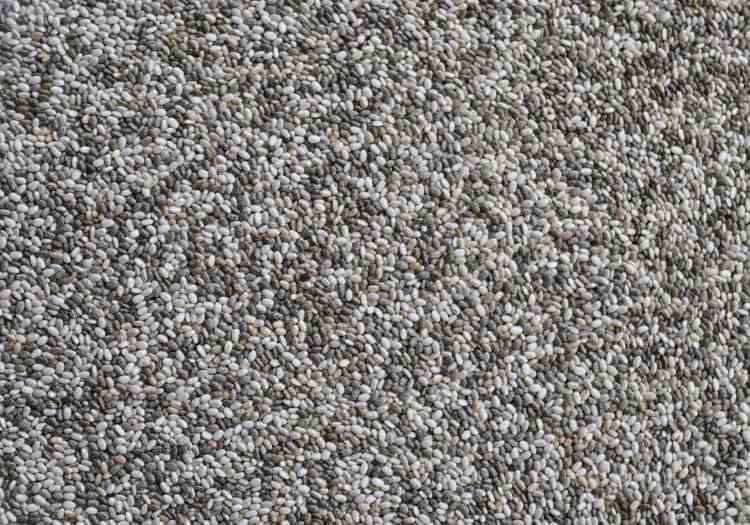
Food allergens linked with eczema causes are typically:
- Dairy products
- Eggs
- Nuts and seeds
- Soy products
- Wheat
Stress
Eczema and stress are connected but research is still underway to determine the link. Some individuals with eczema experience a flare in symptoms when under mental duress. For others eczema is the cause behind stress in the first place.
Hormones
Hormones are chemical substances produced in the body that regulate body functions and processes. They cause a wide range of effects. When the levels of some hormones abnormally increase or decrease, it can lead to eczema.
Symptoms of different types of eczema
Atopic dermatitis symptoms
Atopic dermatitis is a skin disease that causes inflammation and itching on skin when exposed to allergens (4). A significant percentage of the US population suffers from symptoms of eczema; 31.6 million people exhibit mild symptoms of eczema, and 17.8 million for atopic dermatitis, which is considered as a more severe form of eczema (5).
Typically it affects the area under the elbows, skin under the knees, and facial area, but it can appear on any part of the body. Atopic dermatitis is not transmitted from one person to another as it is not contagious. Medical research shows that atopic afflictions like atopic dermatitis are genetically determined, and the patient inherits the tendency from his parents. A child with a parent who has a history of atopic dermatitis has twenty five percent chance of having some form of allergic skin disease. If both parents are atopic, the baby is at much greater risk of developing atopic dermatitis.
Atopic dermatitis usually has its onset in childhood, mostly during infancy. Its symptoms include dry, scaly, itchy skin with rashes, rashes on the cheeks and limbs and cracks behind the ear. It shows signs of improvement for a while but then worsens. When it flares up, open gaps or crusted sores on skin may appear from infections or from scratching. The problem often resolves during childhood though affected individuals may have lifelong tendency of having:
- Easily irritated, sensitive, dry skin
- Skin infections
- Eye problems such as cataract and eyelid dermatitis
- Disrupted family and social life
Seborrheic dermatitis
In infants, it usually affects the scalp and is referred to as “cradle cap”. It may appear on scalp in adults and older kids as well. It looks similar to dandruff but is much itchier and the skin is inflamed. It may also affect the face and upper part of chest in some people, and can overlap with psoriasis.
The commonly observed symptoms of seborrheic dermatitis are (6):
- Erythema or redness of skin
- Itching and appearance of scales
- Flaking and dry skin
Seborrheic dermatitis is known to be caused by an inflammatory reaction to yeast generally found on the skin called Malassezia (7). Many factors can lead to exacerbation of seborrheic dermatitis such as seasonal changes, mental stress, illness, and heavy alcohol intake.
Dyshidrotic eczema
Dyshidrotic eczema is a kind of eczema in which small sores erupt on the hands and feet. These sores or blisters are often itchy.
You are more likely to develop dyshidrotic eczema in these conditions (7):
- When under mental duress.
- If you are prone to allergies and are suffering from hay fever or rhinitis.
- When your skin is exposed to water or moisture.
- If you work with cement or do any work that exposes your skin to cobalt and nickel.
The symptoms of dyshidrotic eczema are tiny fluid-filled abscesses and vesicles that erupt on hands, fingers and feet. They most commonly appear along the sides of the fingers, palms, toes and soles. Scaly and flaky patches appear on skin that easily get cracked and may bleed. The blisters are very itchy and cause vast discomfort. Due to scratching, the skin becomes thick. Large blisters may be painful.
Nummular eczema
Nummular eczema (sometimes also called discoid eczema) is a widespread type of eczema that can affect people of any age group. It is also called as discoid eczema or nummular dermatitis. It is distinguishable because it looks very unusual compared to the usual atopic dermatitis and it is far more difficult to treat (8). Its name “nummular” is derived from the Latin word for “coin” as the spots have the shape of coins on the skin. Their edges are well-defined and are usually very itchy. They vary from being dry and scaly to being wet and open.
The exact cause of nummular eczema is yet unknown, but it is not contagious and does not seem to be passed down from parents to children. Sometimes there is an irritant or trigger such as (8, 9):
- A bite from an insect.
- During an inflammatory reaction to some irritant.
- In winter season when skin becomes dry and rough.
Neurodermatitis
Neurodermatitis is also known as lichen simplex chronicus. It is a skin malady similar to atopic dermatitis in which the skin becomes itchy. It appears in form of focal patches—one or more—that appear due to repeated rubbing or friction over the same area many times.

These focal patches tend are usually thick and scaly and appear on specific areas of the body including:
- Neck and scalp
- Shoulders
- Ankles
- Forearm
- Back of hand
As in atopic dermatitis, the affected areas eventually become thickened due to scratching with skin markings, and discoloration. Unlike atopic dermatitis though, the focal patches are always present while other skin areas remain unaffected.
Its cause is unidentified, but some triggers such as an insect bite, tension, or even a nervous habit, seem to have a role in causing it. The nerves of skin tend to be unusually excitable to transmit the itch sensation.
Treatment of eczema
Eczema can be an extremely irksome and sometimes painful skin condition to deal with, regardless of whether you suffer from it several times throughout the year or only when weather changes. It the itching and pain becomes too much of a trouble, you should consult with your doctor.
Eczema treatment has four key targets:
- The first goal is to reduce itching.
- To repair injured skin.
- To prevent flare ups.
- Protection from infections.
The best therapy course for you is determined by your age, drug history, medical history, severity of your symptoms, and other factors (10, 11). You would probably need a combination of remedies to get best results. Apart from medicines, there are many things you can do on your own to treat eczema.
Medications for eczema (the ultimate guide)
Medicines for eczema can decrease severity of your symptoms and help the skin mend and repair when you take them as instructed by your doctor. Every drug may not have the same effect on everyone, though. Therefore, you’ll probably have to give some medicines a trial run before settling on one medicine.
Corticosteroid drugs
For eczema, corticosteroids are available in form of creams, ointments, foams, and solutions (12). Hydrocortisone steroids rapidly provide relief from itching and decrease inflammation. They are available in various potencies; from mild over-the-counter options to stronger prescription drugs.

Over the counter hydrocortisone is often the first drug dermatologists recommend for treatment of mild eczema. Every individual requires different strengths of these drugs depending on area affected and severity of symptoms. For instance, a dermatologist may prescribe a more potent corticosteroid for scaly, thick skin. Adverse effects produced by these drugs, such as stretch marks and thinning skin, rarely occur if these drugs are used as directed.
Barrier repair moisturizers
These are available in both prescription and over the counter forms. They help seal in moisture into your skin, mend broken skin, and reduce redness, dryness and itching (13). Some moisturizers may have a strong aroma or other irritant ingredients, so ask your doctor or pharmacist which ones are best for your skin type.
Pimecrolimus and tacrolimus
These are eczema medicines patients rub onto their skin. These drugs treat mild-to-severe eczema in some people. They reduce inflammation, but they aren't steroids (14). They may raise the danger of skin cancer and non-Hodgkin’s lymphoma, so be careful while using them. Talk to your doctor about possible risks before using it.
Corticosteroid tablets and liquids
These high potency medicines are used to relieve symptoms of severe or persistent eczema. Because of the danger of serious adverse effects such as bone loss, you should use these only for a short period of time.
Antibiotics
Eczema causes severe itching and scratching itchy areas damages your skin, which makes it vulnerable to bacterial infections. Antibiotics prevent and fight bacterial infections (15).
Antihistamines
These drugs are used to ease itching and inflammation in atopic eczema caused by allergens (16).
Phototherapy
Ultraviolet (UV) light is used in treatment of moderate to severe eczema. These rays help keep the immune system from being over active (17, 18). But exposure to UV rays beyond a safe limit can age your skin and increase danger of skin cancer (18). That is why dermatologists use the lowest possible dose and monitor patient’s skin carefully.
Phototherapy is of two types:
UV light therapy
The dermatologist exposes your skin to UVA rays, UVB rays, or to a combination of both. Coal tar is rubbed onto skin of patient at same time. Eczema patients generally require two to three sessions every week.
PUVA therapy
In this type of phototherapy, the patient is given psoralen, a prescription drug that increases the skin’s sensitivity to UVA light. It’s for patients whose eczema doesn’t show any signs of improvement from UV therapy alone.
Home remedies for eczema
Besides medicines, there are many home remedies that you can use to treat eczema.
Coconut oil
Application of coconut oil is a great home remedy to treat eczema.
It sinks into the skin and fills in the space between skin cells that is opened up and prevents loss of moisture (19). Its composition is lipid and the fat and oil content prevents your skin from drying out and becoming more sensitive.
For treating eczema, purchase a bottle of coconut oil from your local pharmacy and follow the instructions of the pharmacist or your physician.
Instructions
Wash your hands properly and dry them with a soft towel. Apply the coconut oil onto the itchy areas, and leave it on. Use this throughout the day whenever itching increases.
Jojoba oil
Jojoba oil is also a fantastic remedy for curing eczema. It isn’t really oil, but actually a liquid wax (20). It passes deep into the skin, and its composition and structure of molecules closely resembles that of our natural skin oil known as sebum. Jojoba oil is made up of long chain fatty acids and fatty alcohols and has high moisture content. Jojoba oil can be easily purchased from any store.
Instructions
Wash your hands properly with water and dry them with a towel. Rub jojoba oil onto the affected area, softly massaging it into affected skin until it is absorbed. Tread lightly while using it because it is very rich. Apply it three times per day to achieve relief from eczema.
Body butter
Body butters are an excellent remedy for itchy, dry, scaly patches ok skin in eczema (21, 22). You can combine four moisturizing healing oils that make an amazing body butter-these include shea butter, coconut oil, jojoba oil and beeswax. Shea butter has a high content of fatty acids that are non saponifiable. They are oleic and stearic acids. Non-saponifiable basically means it cannot be hydrolyzed and saponified and cannot be used for making soap. Most of its healing qualities are derived from oleic and stearic acid and their great capability to heal, repair and moisturize broken skin. It also helps alleviate inflammation, which is a huge advantage where eczema is concerned. Beeswax is for the most part just the medium used for thickening the body butter, but it also shields and softens the skin.
To make body butter for eczema you will need:
- Shea butter: Two tablespoons.
- Beeswax: Two tablespoons.
- Coconut oil: Six tablespoons.
- Jojoba oil: Four tablespoons.
- If needed, lavender essential oil.
- Glass jars or airtight jars for storage purposes.
Directions
Melt down the beeswax and jojoba properly in a double boiler. After they have melted down pour in the coconut oil and stir until it is completely melted. After that, reduce the heat a bit and add in the shea butter and stir until it melts. It is added last because shea butter is more heat sensitive, and it may become grainy if it is over exposed. Pour the body butter mixture into airtight glass jars and if you want add in a drop or two of lavender essential oil. Put the lid on and let it cool. Apply copious amounts to areas affected by eczema.
Vegetable glycerin
Vegetable glycerin is an effective remedy when it comes to eczema (23). What sets vegetable glycerin apart from normal glycerin is that it is plant based. It is derived from the fats and oils present in things like palm or coconut oil. Regular glycerin is derived from animal fats, and it is not food grade. Food-quality vegetable glycerin is ninety nine percent pure, with remaining content being water. It is really a fine eczema remedy to work with, and can help refurbish moisture to cracked, inflamed, itchy skin. It is a humectant, as it draws water to it and locks in the moisture. When used as an eczema remedy it helps fill in the cracks in dehydrated, dry skin, and draws up water from the deeper layers of the skin. It dissolves effortlessly in water, making it perfect for as a moisturizer.
You will need:
- Some filtered water
- Food-grade vegetable glycerin
- A mister or spray bottle.
Instructions
Keep a 1-1 ratio of water and vegetable glycerin. Fill the glycerin solution into a spray bottle, and shake it properly to blend the ingredients. Spray on skin over affected areas. You can fiddle around with the ratios but it is usually recommended to begin with the lower ratios until you have tested your skin’s reaction to the solution.
Make some long-term changes
You will have to make some long-term changes to acquire long term relief. Keep a little record book or log that keeps a track on what you are doing, what you are eating or what are the environmental conditions when your eczema flares up or you experience the most discomfort. Note down the dates, as well as your food intake at the time and any foreign substances that you may have exposed your skin to for example a new lotion, new hand soap, detergent, etc. Over time, you will see a pattern beginning to emerge that will give you a better sense of what things and food items to avoid and will help you in managing your eczema on a daily basis. Avoiding irritants and allergens is a good approach that many people find helps their eczema.
Soak in an oatmeal bath
Many people have found an oatmeal bath to be an effective remedy for eczema relief, and it visibly soothes and moisturizes dry, inflamed skin (24, 25). The constituents of oatmeal have anti-inflammatory qualities, which can help allay discomfort and itching caused by inflammation associated with eczema.
You will need:
- About one cup of oatmeal
- Muslin, cheesecloth or a cloth of some similar fabric
- Bathtub
Instructions
Place the oatmeal into a muslin cloth or cheesecloth and tie it off firmly into a small bundle. Attach an extra-long piece of cloth around the top. Fill your bathtub part way with water and then using the extra piece of cloth, hang the oatmeal bag right under the faucet. Let the bath run until it’s full and the water smooth and milky. Lay in this oatmeal bath for ten to fifteen minutes. After getting out, pat yourself gently dry with a clean towel, and apply your regular moisturizer. Don’t take out the bag even after the tub is full. Give it a good squeeze now and then to add more oatmeal to the bath.
Chamomile bath
Chamomile is incredible as a soothing agent for eczema stricken skin. It relieves inflammation, reduces itchiness, and repairs and heals areas that are overly scratched (26). Its soothing qualities arise from a natural alcohol known as levomenol or bisabolol. This constituent has been known to relieve irritation, alleviate inflammation, and has anti-microbial traits, which can help finish off any bacteria that decide to exploit the weakened state of your skin. A chamomile tea bath is an extremely soothing remedy for eczema. If you like, you can even try oatmeal and chamomile bath.
You will need:
- Chamomile: Four tablespoons
- A cheesecloth or muslin.
- Your bathtub
Instructions
Wrap the chamomile in the cloth and tie the edges firmly to make a small bundle. You can add in more afterwards if you like, but generally four tablespoons are enough. Allow the tap to run until the tub is filled part way and then tie the bundle to the faucet so that water runs right over it. After the tub is full, drop the chamomile bag into the tub and give it a good squeeze now and then to get maximum healing benefits. Soak in this bath for about ten to fifteen minutes or so. After getting out of the tub gently dry yourself with a clean towel. Apply your usual moisturizer if needed.
Fish oil
Fish oil has been known to help relieve the severity of eczema in many people (27).
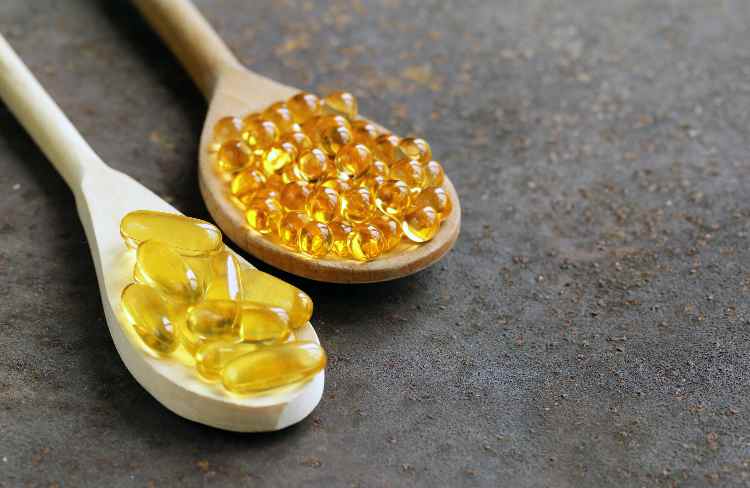
It is particularly effective in reducing itching. Studies have shown that in individuals with atopic eczema, the rate of essential fatty acids breaking down into their metabolites is lower (27). And there is lower uptake of these fatty acids by cell membranes close to skin. N-6 and N-3 fatty acids play an important role in keeping skin function normal and fish oil is rich in both these fatty acids. If you take a dose of fish oil every day, it will compensate for lower uptake of fatty acids by body.
Things you will need are:
- Fish oil
- If needed, orange juice.
Instructions
Purchase fish oil capsules or liquid from a local pharmacy or store and follow dosage instructions given on label. To make taste of fish oil liquid more palatable, mix in some orange juice. It gets rid of any unpleasant flavor, smell, and any remaining traces of fish taste that the capsules might still have.
Honey
Honey has all the qualities to make it an excellent remedy for eczema.
It has anti-microbial, anti-bacterial and anti inflammatory properties (28). It speeds up the healing and repair process of broken skin, and it is a humectant (pulls water towards itself). It can be very sticky and messy so it can only be applied over small areas of skin rather than being slathered over arms or legs.
You will need organic, raw honey and a bandage.
Instructions
Wash your hands and dry them properly. Rub a thin layer of honey over the area affected by eczema. If you like, you can place a bandage over it to avoid rubbing it against anything but it is more beneficial to leave it uncovered. Leave it on for half an hour. Then wash it off with cool water, dry skin gently. Repeat this process three times a day.
Cornstarch
Mixture of cornstarch and water can be a soothing remedy for eczema (29). If only mixed with water, the cornstarch mixture may absorb up any moisture that your skin badly needs during eczema. To avoid this, add in some grape seed oil or olive oil. Plus, these will act as moisturizers.
How to make cornstarch paste?
Combine cornstarch and enough oil to make a paste with a good texture. It shouldn’t be so thin that it’s watery, neither too thick that it won’t spread easily over your skin. Apply to spots affected by eczema, leave it on for half an hour, and then wash it off with warm water. Gently with a clean towel and put on your usual moisturizer as required.
French green clay
Skin becomes very itchy during eczema and it causes a lot of discomfort. It becomes very hard to resist scratching the itchy spots. Little cracks can open, bleed and scab over, and are easily scratched off again, which gives your skin no time to repair or mend. Scratching will also only exacerbate inflammation, and while it may provide momentary relief, a vicious cycle will ensue. French green clay has a high magnesium, iron, potassium, calcium and mineral content. It makes it the ideal paste to stop pain and itching and it also reduces inflammation (30). French green clay gets its green color from decayed plant matter. Ensure that it is actually green or you will end up with a bogus product. You can prepare the paste with witch hazel or water. Witch hazel gives an extra boost to healing and anti inflammatory properties of this clay and helps mend weeping cracks and blisters.
Things required:
- Half a cup of green clay.
- Witch hazel extract or water.
Instructions
Prepare a creamy paste by mixing water or witch hazel with French green clay. Rub directly onto the broken area and allow it to dry. After it has dried, wash off the paste under cool water and softly dry it without irritating the skin further. If there is any paste leftover, store it in an air tight glass jar. If it becomes dry, mix in more water or witch hazel.
Precautions when using home remedies for eczema
After applying and washing off any skin remedy, don’t dry your skin with a hard cloth or towel as it will further irritate the skin. Pat your skin dry gently and use a soft towel or cloth.
Do not continue phototherapy for too long as there is risk of developing skin cancer.
Do not use high potency corticosteroids for a long period of time or without consulting your doctor.
FAQs
My eczema flares up when I am stressed? Is this common?
Yes. Many people have reported eczema flare ups in stressful conditions. Use a mild corticosteroid to treat it.
Is eczema contagious?
No, eczema is not contagious and cannot be transmitted by contact. It is usually passed from parents to children.
Do certain fabrics affect severity of eczema?
Wearing wool clothes and synthetic fibers may cause eczema symptoms to worsen while wearing light weight, cotton clothes is beneficial.
When should I see a doctor?
Whenever you feel that home remedies are not adequate for treatment of eczema, visit your doctor and he will prescribe a suitable medicine for you.
Things to remember
If you keep your skin healthy, you can save it from itching, dryness, inflammation, and you will not need any medication.
Keep a record of irritants and allergens that make your eczema worse and try to avoid these things. These can be environmental factors such as dust, change in seasons, etc. Or these may be food allergens such as soy, milk, dairy products, etc. Avoid wearing wool clothes or synthetic fabrics and wear light weight, breezy cotton clothes instead that do not rub against your skin and irritate it.
Corticosteroids, antibiotics, antihistamines are usually used for treatment of eczema. Follow dosage instructions given by your doctor to get the best results. Phototherapy is also a treatment method but it may have some serious side effects so it is only used in severe cases of eczema and only with prior consent of your physician.
Coconut oil, jojoba oil, body butters, honey are used as natural treatment options for eczema.
| Written by: | Michal Vilímovský (EN) |
|---|---|
| Education: | Physician |
| Article resources: | See numbered references within the article. |
| Image resources: | Adobe Stock and Pixabay |
| Published: | July 17, 2016 at 8:20 AM |
| Next scheduled update: | July 17, 2018 at 8:20 AM |
Get more articles like this in your inbox
Sign up for our daily mail and get the best evidence based health, nutrition and beauty articles on the web.

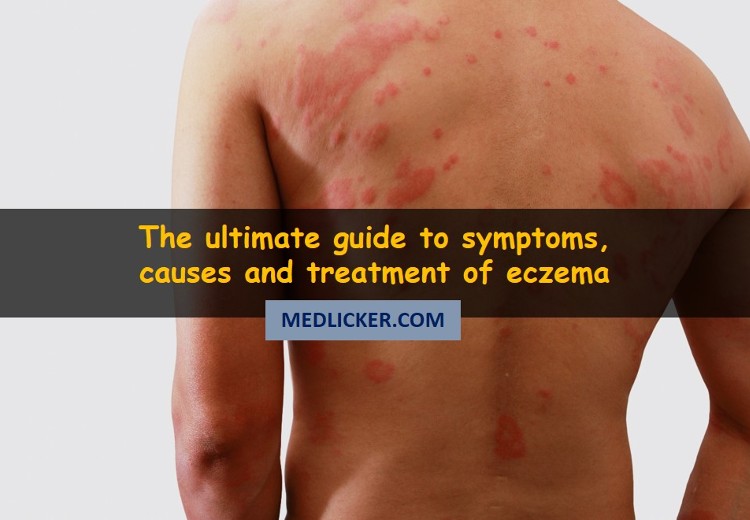
Ache in left arm that you should not ignore
Alkaline water dangers: why you should not drink it
How to Avoid Sleepiness While Studying?
23 Foods That Increase Leptin Sensitivity
Low dopamine (e.g. dopamine deficiency): causes, symptoms, diagnosis and treatment options
Swollen taste buds: the ultimate guide to causes, symptoms and treatment
Thin endometrial lining: causes, symptoms, diagnosis and treatment
Pimples inside nose: the complete guide
Holes in tonsils: definition, symptoms, treatment and prevention
How to deal with an ingrown hair cyst
Allegra vs. Zyrtec vs. Claritin
Allergy to penicillin and alternative antibiotics
How to get rid of phlegm (excessive mucus) in throat? Detailed guide to medical and home remedies, symptoms and causes
What causes stomach ache after meals?
Liver blood test results explained